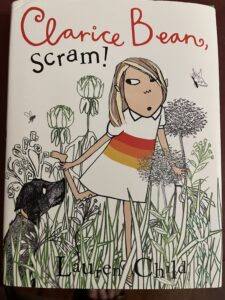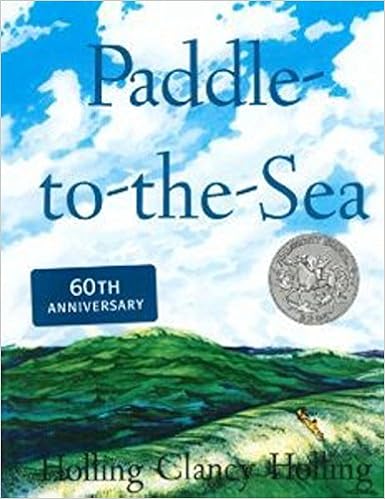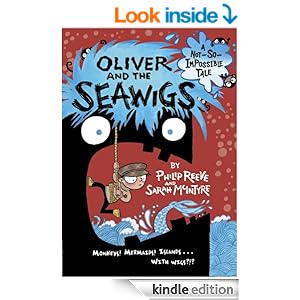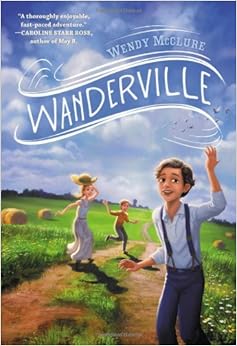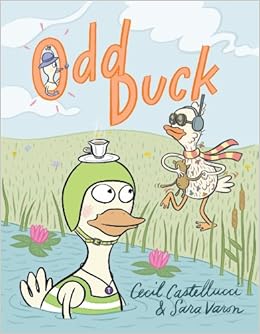I have a private, subscription library in my home—sort of a school library for literature lovers and homeschoolers. It gives me an excuse to purchase and rescue those treasures of books that I find in the thrift store or at the garage sale. I bought lots of books this week, first at the Books Bloom seminar with Jan Bloom, then at the thrift store. Something for everyone!
 Picture books:
Picture books:
Wombat Stew by Marcia K. Vaughan. A dingo captures a wombat and decides to make himself a gooey, brewy, yummy, chewy wombat stew. But the wombat has a few tricks up his sleeve. This is a great Australian classic picture book for those who want to make a quick trip Down Under.
Moy Moy by Leo Politi. Politi was an Italian American author and artist who was both a devout Catholic and a pacifist. His books celebrate cultural diversity and children living within those diverse cultures. Moy Moy is a Chinese American girl living in Chinatown in Los Angeles. Most of Politi’s books are set in California, near Los Angeles and feature loving families, ethnic celebrations, and colorful scenes.
Listen to the Rain by Bill Martin, Jr. and John Archambault. “the slow soft sprinkle, the drip-drop tinkle, the first wet whisper of the rain.” A rain poem, with beautiful illustrations by James Endicott, this book is one of the many recommended in my preschool curriculum, Picture Book Preschool.
Also, I found paperback copies of the Picture Book Preschool books Galimoto by Karen Lynn Willliams, A House Is a House for Me by Mary Ann Doberman, and The Story About Ping by Marjorie Flack.
 Easy readers:
Easy readers:
The Littles by John Peterson. I also bought copies of The Littles Take a Trip, The Littles to the Rescue, The Littles and Their Amazing New Friend, The Littles Go to School. These books about “little people” are for beginning readers who are not quite ready for The Borrowers, my favorite little people series.
Shoes for Amelie by Connie Colker Steiner. The story of a French farming family during World War II who take in and hide little Jewish girl named Amelie, based on the true story of the rescue of Jews by the people of the French region of Plateau Vivarais-Lignon.
One Fish Two Fish Red Fish Blue Fish by Dr. Seuss. I didn’t have a copy of this classic Dr. Seuss romp, but now I do. In fact, most of my Dr. Seuss books were read to death by my eight lovely children a long time ago, so if you have any to donate, they would be well-loved and well read, I’m sure.
Middle Grade Fiction:
The Bobbsey Twins of Lakeport by Laura Lee Hope. The first of the Bobbsey Twins series, and I have a few others in the series in the library, too. If you have any of these books you’d like to donate to Meriadoc Homeschool Library, I’d be happy to have them.
The Fox Steals Home by Matt Christopher. In this sports story Bobby plays baseball and deals with his hurt over his parents’ divorce.
The Thief by Nancy Rue. This episode in the Christian Heritage Series, The Williamsburg Years, shows readers the deep enmity in the 1780’s between loyalists to the British crown and patriots who were determined to make a new nation, separate from England. Can the two sides ever come to agreement on anything, even the meaning of right and wrong?
The Black Stallion Legend and The Black Stallion Revolts by Walter Farley. I now have five of the many Black Stallion books in my library. If you have any others you’d like to donate, I have some horse-loving readers who enjoy these books.
 The Rescuers by Margery Sharp. The mice of the The Prisoners Aid Society rescue a Norwegian poet, with Miss Bianca as interpreter and Bernard, the humble pantry mouse, and Nils, his partner, as mice-to-the-rescue.
The Rescuers by Margery Sharp. The mice of the The Prisoners Aid Society rescue a Norwegian poet, with Miss Bianca as interpreter and Bernard, the humble pantry mouse, and Nils, his partner, as mice-to-the-rescue.
Nonfiction:
The Mississippi Bubble by Thomas Costain. One of my favorite history writers tells the story of land speculation and emigration gone crazy in France and French Louisiana in the 1700’s. Speculative and economic bubbles are nothing new, as this true history in the Landmark History series demonstrates.
The Family Nobody Wanted by Helen Doss. A family in the 1950’s adopts a diverse group of children of mixed race and heritage. This book was one of my favorites as a teen, and although we never adopted children, I think the lessons learned of acceptance and indiscriminate love from this book and other similar stories helped me to understand and affirm the multi-racial families of many of my friends and neighbors.
Corn Is Maize: The Gift of the Indians by Aliki.
How Animals Talk by Susan McGrath. National Geographic Books for Young Explorers.
More Than Moccasins: A Kid’s Activity Guide to Traditional North American Indian Life by Laurie Carlson.
Kids Around the World Create! The Best Crafts and Activities from Many Lands by Arlene N. Braman.
Collecting good books is such a fun hobby, or maybe even a calling or vocation. I am immensely thankful that I get to preserve and share these books with my community. (These are only few of the books I found this week. I’ll tell you about more in another post soon.)
